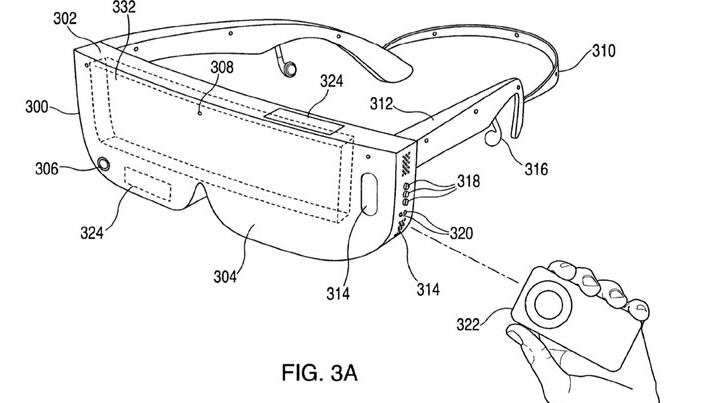VR/AR mash-up may be Apple's ticket to the headset party

The United States Patent and Trademark Office has granted Apple a new patent for a smartphone-powered headset that appears to be capable of performing both virtual reality and augmented reality functions.
While companies such as Samsung and Google have been leading the charge in the field of mobile virtual reality with the Gear VR and Daydream View headsets, and Microsoft appears to be slowly attempting to perfect augmented reality with its HoloLens kit, Apple has remained relatively quiet.
We say relatively; while Apple hasn’t officially announced any concrete plans to develop a headset for VR or AR, the company’s CEO Tim Cook has publicly extolled the virtues of AR and cast doubt on the value of VR several times now.
Tim Cook’s belief that enclosed VR experiences don’t have as much appeal as AR experiences has, understandably, led to rumours that Apple must be working on its own AR headset.
Why do one?
However, this new patent that the company has been granted suggests that it’s been working on a headset that combines the technologies. Tim Cook may not enjoy pure VR but he might see its value when it’s combined with AR capabilities.
Similar to the Gear VR and DayDream View, Apple’s headset is designed to work by connecting to a portable device. The Gear VR relies on the Samsung Galaxy smartphone line and the DayDream View currently supports Google’s Pixel so, unsurprisingly, the Apple headset detailed in the patent would apparently be designed to support Apple’s iPhones and iPods.
Rather than a bulky headset like what's currently available, Apple’s device is more like a pair of glasses, the arms of which come with headphones built-in. There’s also a strap which can be attached for an extra secure fit.
Sign up for breaking news, reviews, opinion, top tech deals, and more.

It's important to note that, while Apple's patent doesn't explicitly use the terms AR or VR, the features described and the striking similarity to VR headsets currently on the market can't be ignored.
Like the VR headsets on offer today, sliding a smartphone into the Apple headset will allow the user to view media like 360 video and will be able to give images depth by splitting images between the left and right eyes. However, the patent also says the headset may have a number of “widely varied” additional features.
These could include a built-in battery to extend the life of the smartphone when it’s connected or additional memory “to store image based content which can be displayed on the screen.”
Then there’s the section of the patent which hints at modes of operation other than an “internal viewing mode” for watching content on a connected mobile device. The most significant additional mode of operation which points to AR functionality is the “external viewing mode.” This mode, according to the patent, will use the mobile device’s camera or a camera on the headset itself to allow the user to view the “outside world” and capture images.
Living in a virtual world
The user can either ask the headset to switch to this mode themselves or it will switch to external view itself when its sensors detect nearby objects or sounds.
As with any patent, there’s no guarantee that this is a device we’re going to see Apple release any time soon.
However, considering Tim Cook’s explicit interest in the fields of VR and AR it doesn’t seem unlikely that Apple is at the very least working on something like this.
Besides this, considering Apple is now significantly behind Samsung and Google in terms of establishing itself in the VR market, releasing a headset which offers both AR and VR experiences could give the company a serious selling advantage.
- Can't wait for a patent to become reality? These are the best VR headsets available right now.

Emma Boyle is TechRadar’s ex-Gaming Editor, and is now a content developer and freelance journalist. She has written for magazines and websites including T3, Stuff and The Independent. Emma currently works as a Content Developer in Edinburgh.